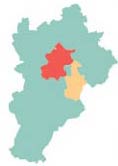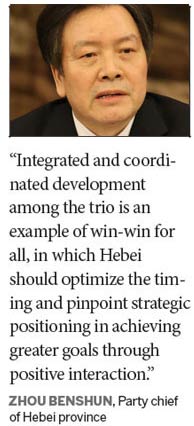Beijing integrates with Tianjin, Hebei
Updated: 2014-04-04 10:52
(chinadaily.com.cn)


|
>>New plan in the making The National Development and Reform Commission, the country's top economic planner, is working with related authorities and regional governments on a development plan to boost the economic integration of Beijing and its surrounding provincial areas, namely Tianjin municipality and Hebei province. The three areas are the important economic growth engines in North China, and play a significant role in leading national economic development. Better guidelines to promote the economic integration of the areas would help them complement each other with respective advantages, as well as propelling economic transformation and upgrading the Bohai Sea rim.
|
 |
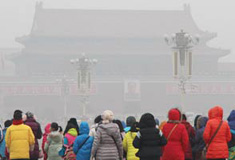 |
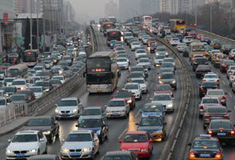 |
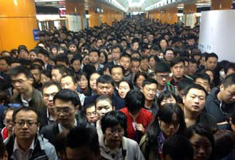 |
|
Home prices in Beijing have skyrocketed in recent years, although measures such as higher down-payments and restrictions on second-home purchases were implemented. |
Air pollution
|
Traffic jam
|
Since 2000, the permanent population in Beijing, one of China's most populous cities, has increased by an average of nearly 600,000 annually to reach 21.14 million at the end of 2013. |
|
>>Backgrounder
The Bohai Bay area including Beijing, Tianjin and Hebei is considered China's third economic engine, alongside the Pearl and Yangtze river deltas. Development of the area has been discussed by the central government since the 1980s. The new leadership restarted the initiative in late February, when Chinese President Xi Jinping held a symposium in Beijing on the coordinated development of the capital and its two neighbors. |
|

|
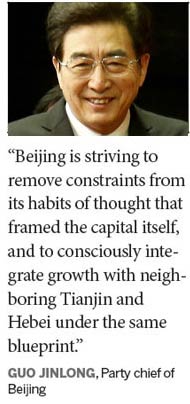 |
As the country's capital, Beijing is home to China's most elite universities, hospitals and decision-makers. Beijing initiates integration with Tianjin and Hebei According to a joint development plan, Beijing will relocate less important industries and divert population to neighboring cities in Hebei, to ease population pressure in the capital, Huang Yan, Director of Beijing Municipal Commission of Urban Planning, revealed on a Radio Beijing program on Monday. >> The news that the Beijing Zoo Wholesale Market, the largest clothing wholesale distribution center in northern China, will be relocated to Langfang, Hebei province, is premature, as the two cities have not reached any agreement on that, Beijing Times reported, citing officials in West District in Beijing.>> Shougang Group, the largest steelmaker in Beijing, finally stopped production in the Chinese capital in 2011, after a new campus was built in neighboring Hebei province, aiming to help curb pollution in the capital.>> |
|
|
|
Tianjin, a port city with a population of 14 million, is linked to Beijing by several highways, or a 30-minute trip by high-speed railway. Establishing an innovative community between Beijing and Tianjin Scientific and technological cooperation and innovation play an important role in promoting the coordinated development of Beijing, Tianjin and Hebei, according to Zhao Haishan, director of the Tianjin Science and Technology Commission, Beijing Daily reported on Wednesday. "The three regions' joint development has become a national strategy, providing more opportunities for cooperation in science and technology," Zhao explained. >> New high-speed rail links Tianjin, Qinhuangdao A high-speed railway connecting Tianjin municipality and a port city in Hebei province started trial operations on Sunday. The Tianjin-Qinhuangdao rail line has nine stops, five in Tianjin and four in Hebei province, the Beijing Railway Bureau said on Sunday. The new 287-km line brings the total length of China's high-speed rail network to more than 10,000 km. |
|
|
|
Hebei, a traditional industrial and transportation hub with rich natural resources and about 73 million residents, surrounds Beijing and Tianjin.
Neighbors prepare for functional transfer from Beijing According to an urbanization document issued on Wednesday, the province will enlarge the size of Baoding to be able to accommodate administrative organs, colleges and universities, research institutions, medical and nursing services transferring from Beijing. >> NDRC denies Baoding chosen as auxiliary capital Officials from the National Development and Reform Commission, the nation's top economic planning agency, denied that Baoding has been chosen as auxiliary capital, although they acknowledged NDRC is drafting a plan to coordinate the development of Beijing, Tianjin and Hebei province. >> |

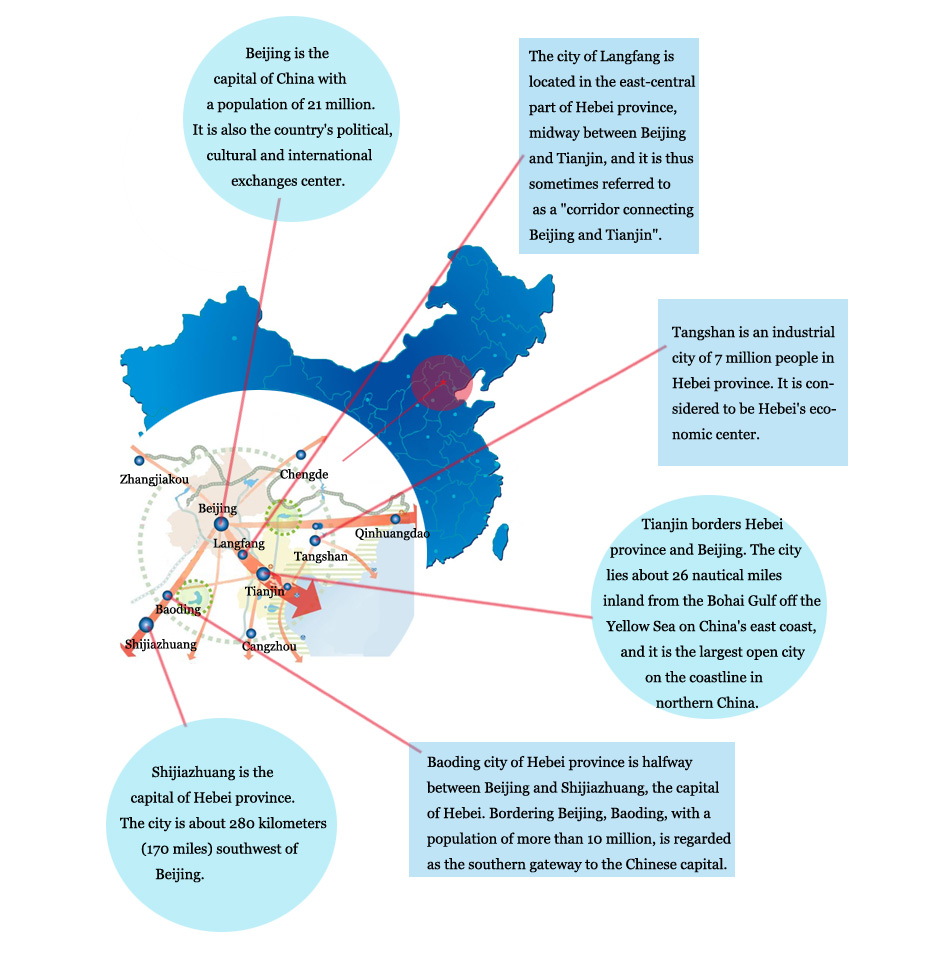

|
-- Beijing Times column Despite their geographical proximity, Beijing, Tianjin and Hebei lack a developed private economy, industrial cohesiveness and openness, compared with the Pearl River Delta and the Yangtze River Delta. >> -- Wen Kui, researcher Geographically, the outer suburbs in Beijing are closer to Hebei instead of downtown Beijing. In that case, the gap will only be increased between those outer suburbs and downtown Beijing when the city center is expected to motivate the competitiveness of the neighboring region.>> --Ma Jihua, senior analyst |
-- Zong Guoying, Tianjin's vice-mayor The integration of China's capital Beijing and its two neighboring provincial areas will give the region a powerful boost, the way the City of Los Angeles rose to prosperity after annexation with surrounding gateway counties. >> -- Cao Heping, economist Integration is more than just an abstract concept. It has many practical issues that need to be addressed, such as transportation, social security system, public services and Hukou, the household registration system. It might need much more effort and a long time to settle.>> -- china.cnr.cn commentary |

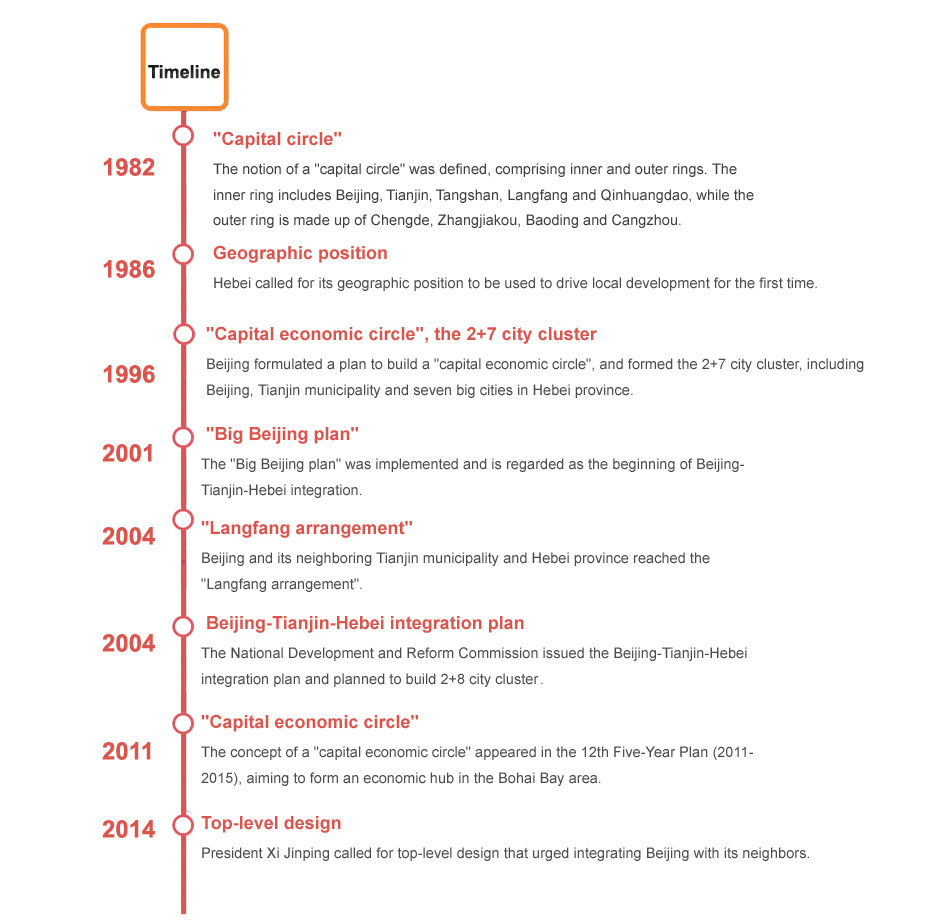

|
As the first industrialized country, the United Kingdom also leads others in planning satellite cities. In the 1940s London built eight satellite cities, each 50 kilometers from the heart of the capital.>> |
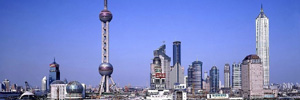 The Pearl River Delta area |
|
As one of the megacities, New York experienced excessive growth and worsening environment in the 20th century. Since then, it has turned toward suburbanization.>> |
The Pearl River Delta area is one of the most economically vibrant zones in China. Large scale commercial activities and foreign trade can be traced back in the Qing Dynasty (1616-1911).>> |
|
France: Paris' management innovation |
|
|
Tokyo's satellite cities were designed to control the inflow of countryside people rather than distribute urban residents.>> |
As the nation bids to change its economic growth pattern, Shanghai leads the charge. The largest city in the Yangtze River Delta economic zone is also the financial center for China.>> |
